Abstract
Three topics are discussed. A discrete-state, continuous-time random walk with one or more absorption states can be studied by a presumably new method: some mean properties, including the mean time to absorption, can be found from a modified diagram (graph) in which each absorption state is replaced by a one-way cycle back to the starting state. The second problem is a random walk on a diagram (graph) with cycles. The walk terminates on completion of the first cycle. This walk can be replaced by an equivalent walk on a modified diagram with absorption. This absorption diagram can in turn be replaced by another modified diagram with one-way cycles back to the starting state, just as in the first problem. The third problem, important in biophysics, relates to a long-time continuous walk on a diagram with cycles. This diagram can be transformed (in two steps) to a modified, more-detailed, diagram with one-way cycles only. Thus, the one-way cycle fluxes of the original diagram can be found from the state probabilities of the modified diagram. These probabilities can themselves be obtained by simple matrix inversion (the probabilities are determined by linear algebraic steady-state equations). Thus, a simple method is now available to find one-way cycle fluxes exactly (previously Monte Carlo simulation was required to find these fluxes, with attendant fluctuations, for diagrams of any complexity). An incidental benefit of the above procedure is that it provides a simple proof of the one-way cycle flux relation Jn +/- = IIn +/- sigma n/sigma, where n is any cycle of the original diagram.
Full text
PDF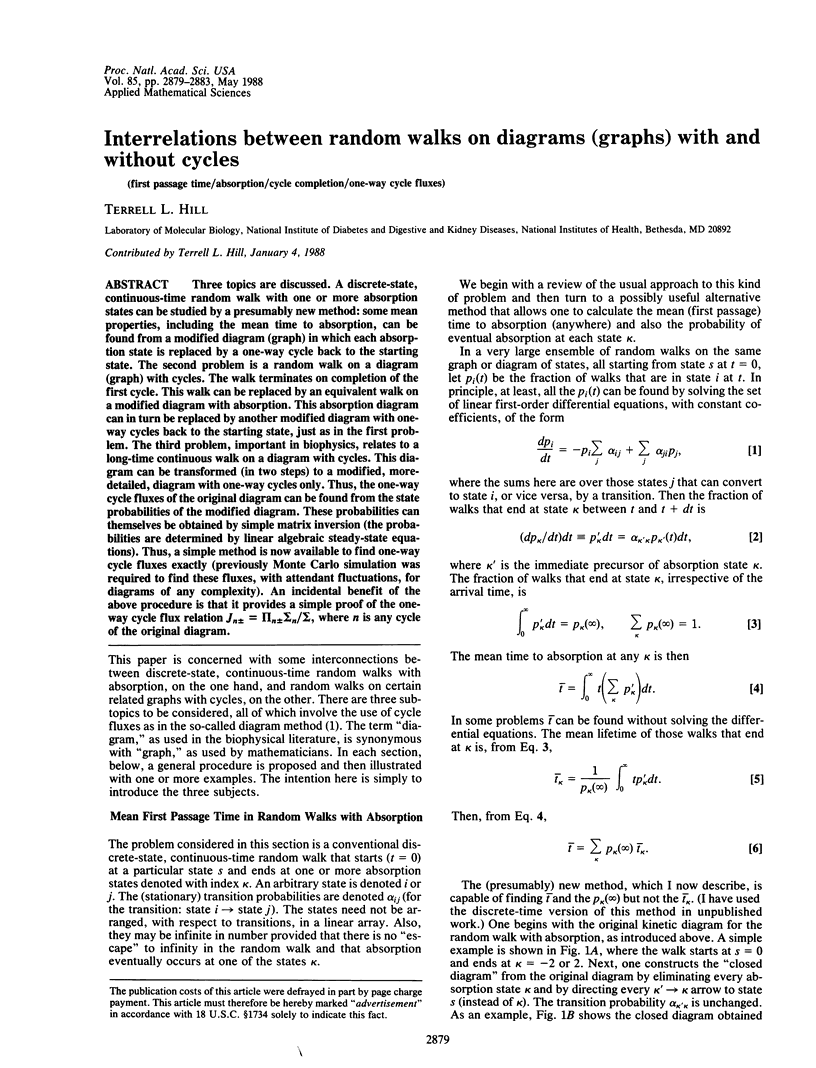
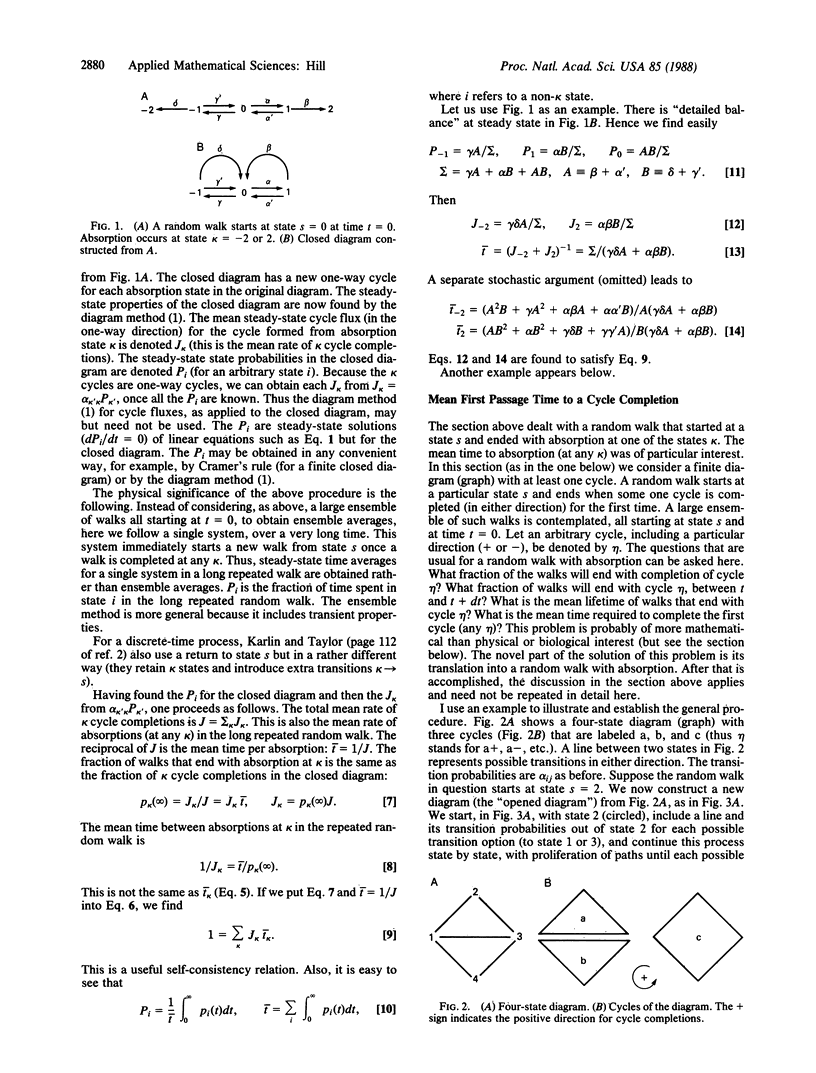
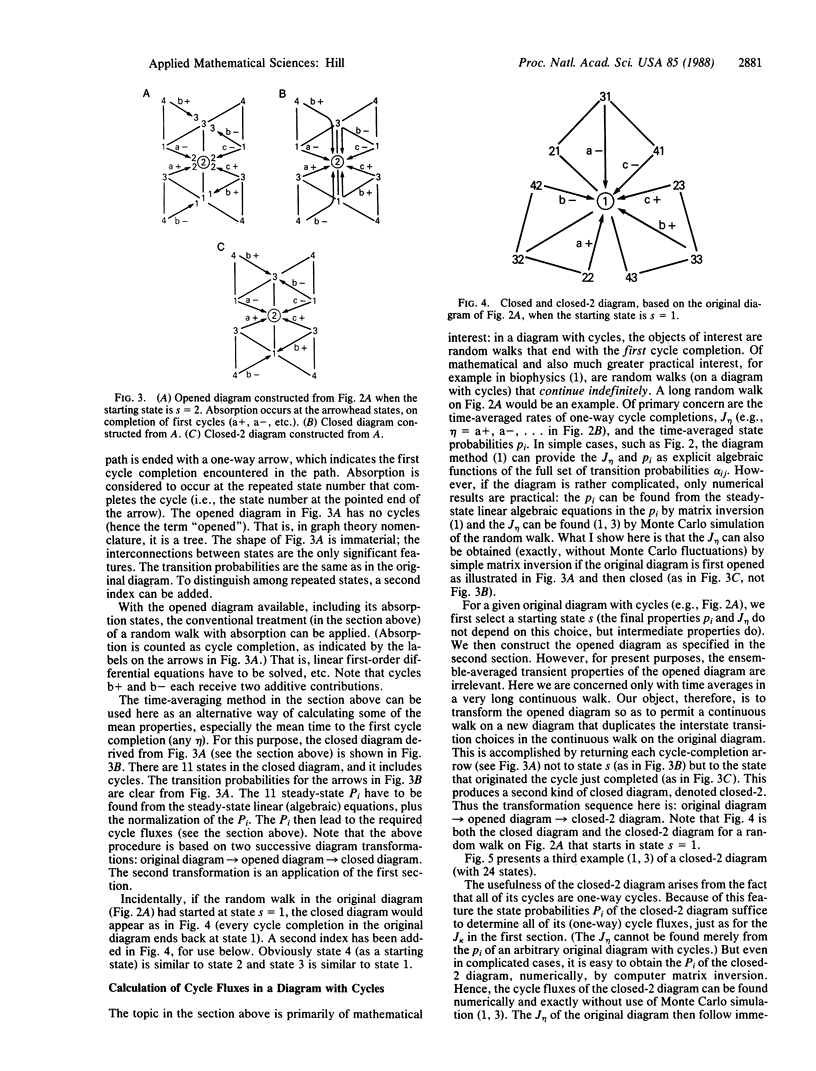
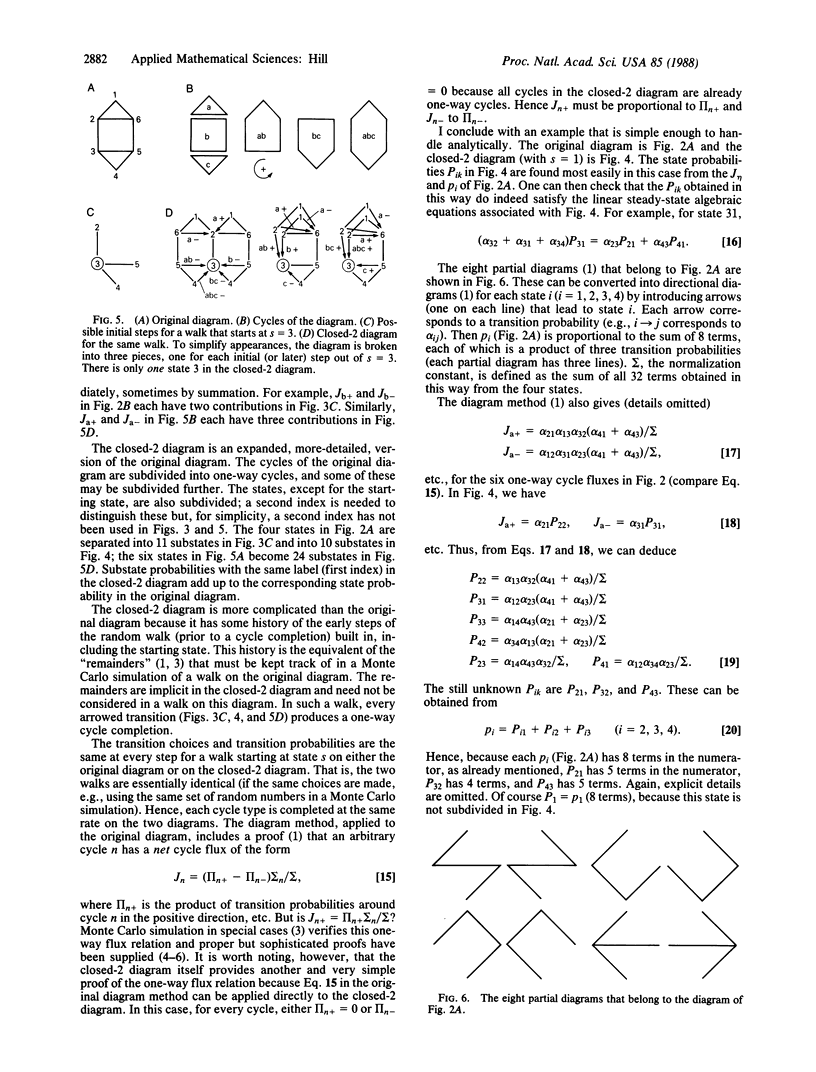
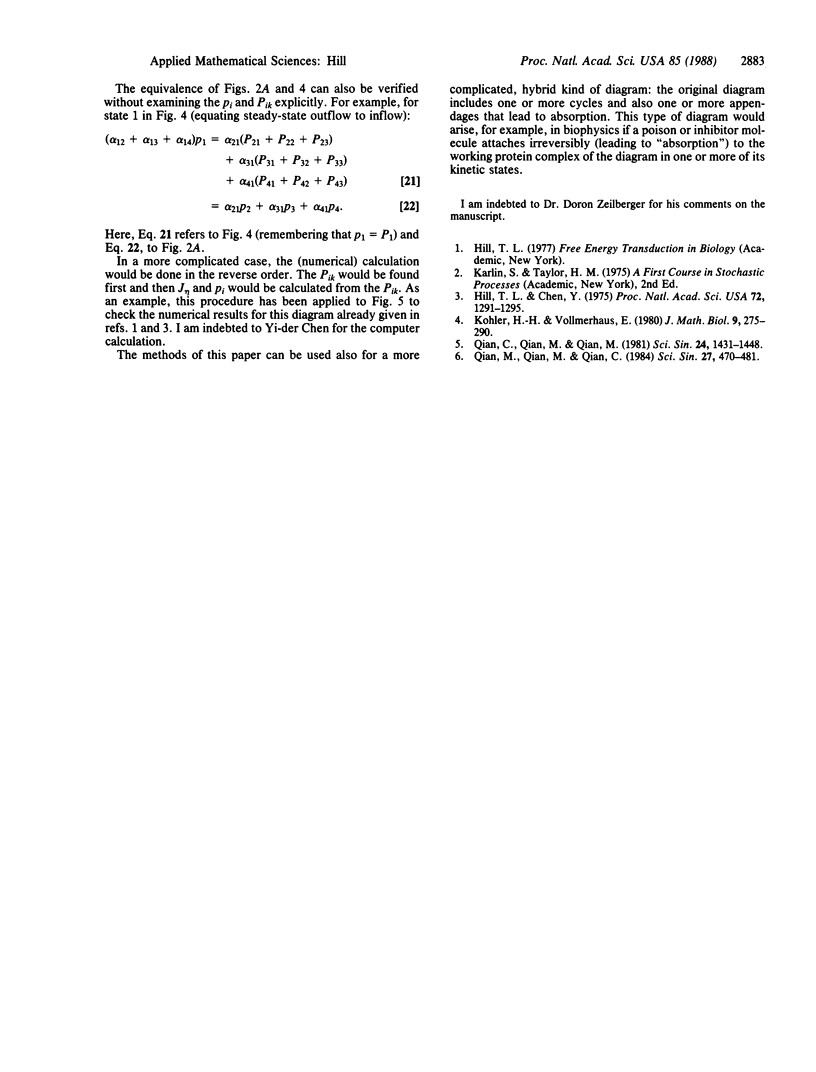
Selected References
These references are in PubMed. This may not be the complete list of references from this article.
- Hill T. L., Chen Y. D. Stochastics of cycle completions (fluxes) in biochemical kinetic diagrams. Proc Natl Acad Sci U S A. 1975 Apr;72(4):1291–1295. doi: 10.1073/pnas.72.4.1291. [DOI] [PMC free article] [PubMed] [Google Scholar]
- Kohler H. H., Vollmerhaus E. The frequency of cyclic processes in biological multistate systems. J Math Biol. 1980 May;9(3):275–290. doi: 10.1007/BF00276029. [DOI] [PubMed] [Google Scholar]
- Qian C., Qian M., Qian M. P. Markov chain as a model of Hill's theory on circulation. Sci Sin. 1981 Oct;24(10):1431–1448. [PubMed] [Google Scholar]


